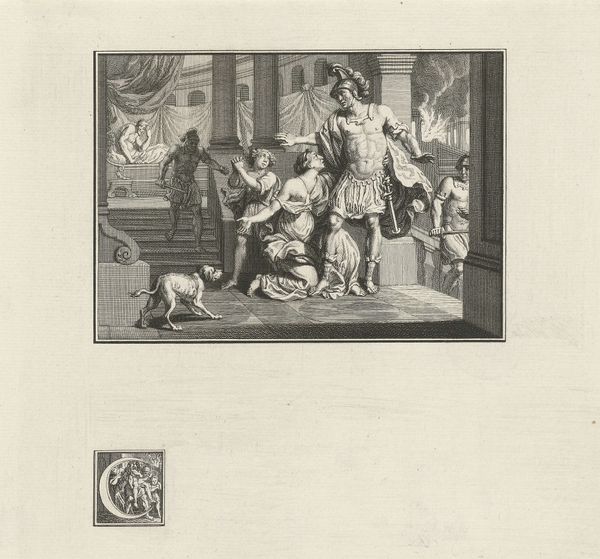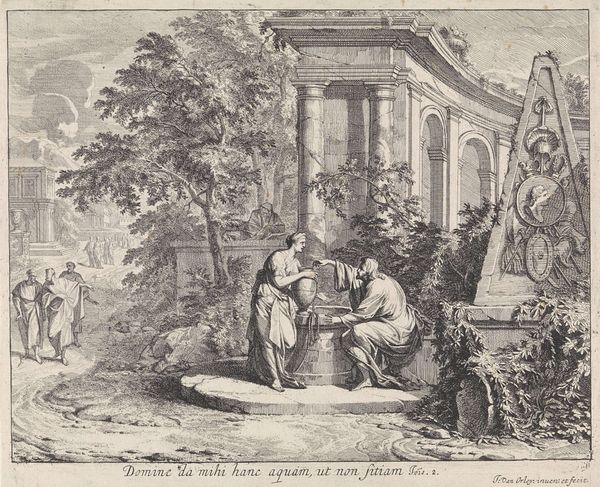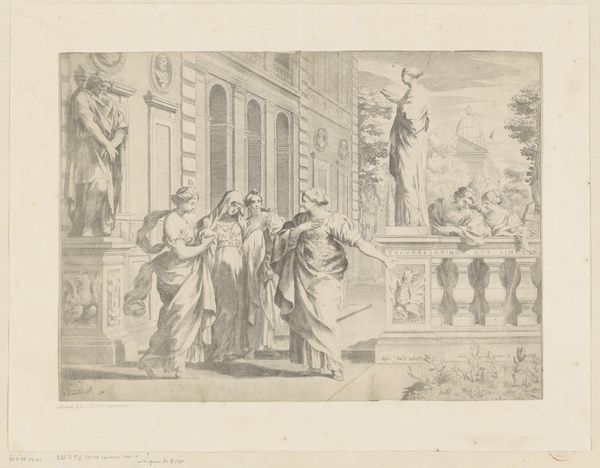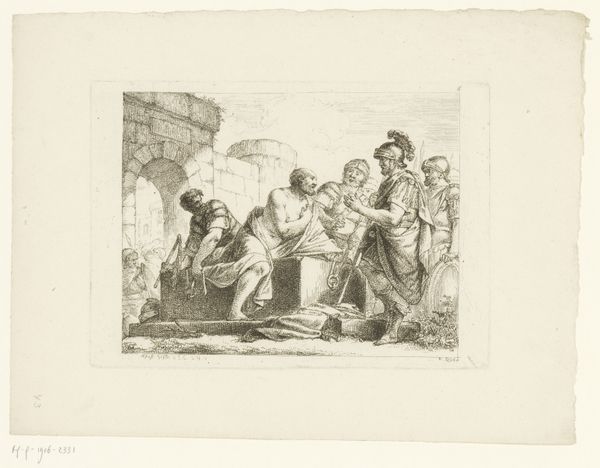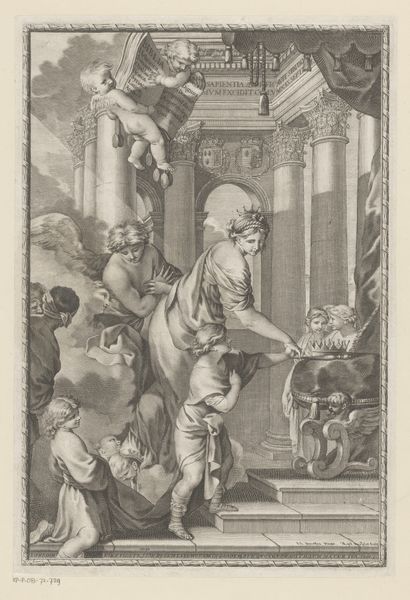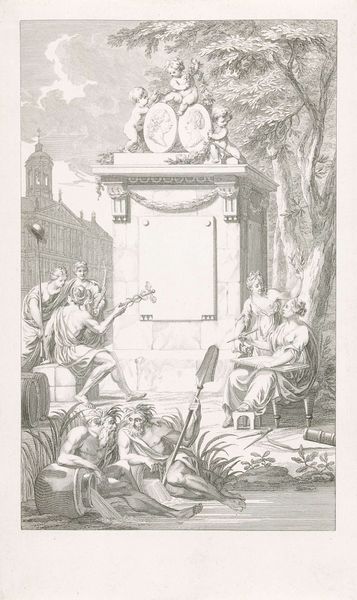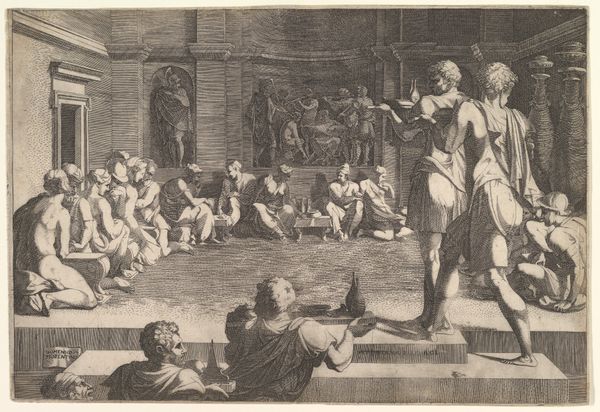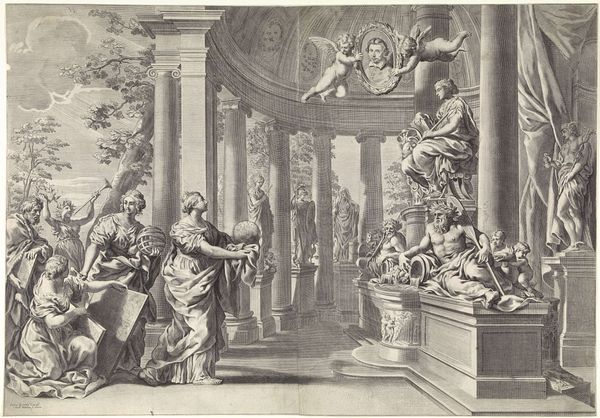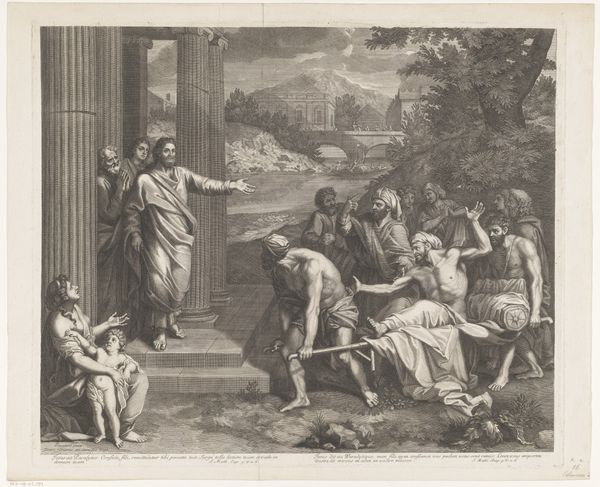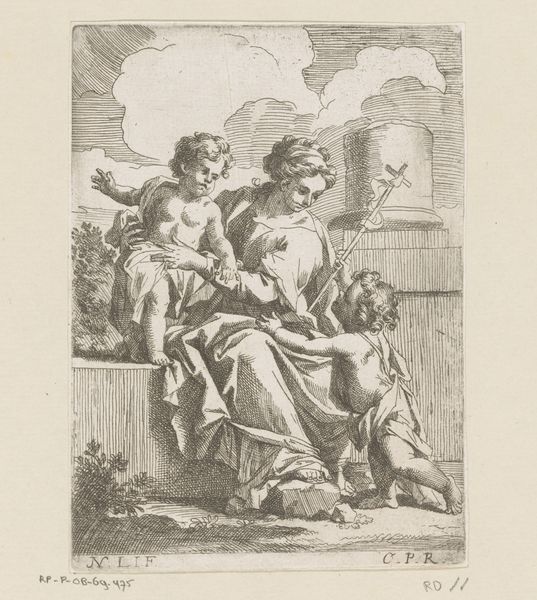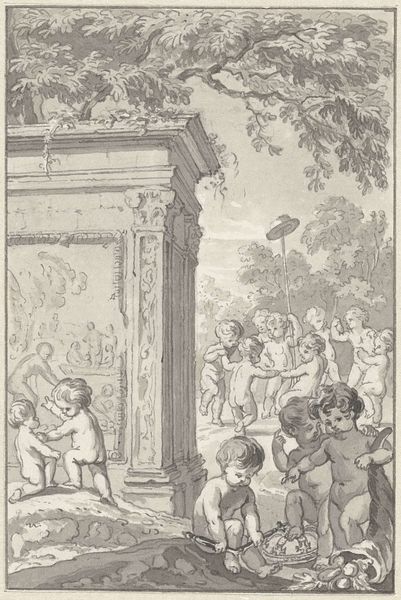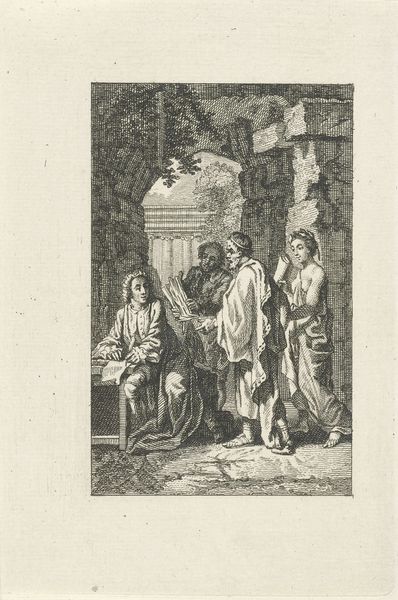
drawing, print, etching, engraving
#
drawing
#
baroque
# print
#
etching
#
landscape
#
figuration
#
history-painting
#
engraving
Dimensions: height 280 mm, width 385 mm
Copyright: Rijks Museum: Open Domain
Editor: Here we have "Christus breekt een beeld" ("Christ Breaking an Idol"), an etching, engraving, and drawing by Johannes Glauber dating from between 1656 and 1726. It seems to be an illustration or history-painting depicting the destruction of classical sculptures. How do you interpret this work? Curator: I see a powerful statement against the enduring influence of classical ideals, viewed through a very specific theological lens. Consider the period; while ostensibly about religious iconoclasm, the work also engages with debates about cultural authority. This act of destruction, is it purely religious, or does it also suggest a rejection of the patriarchal structures embedded within classical art and philosophy? Editor: That’s interesting. I hadn't considered the gendered aspect. What exactly do you mean? Curator: Well, who is being overthrown? Whose images are being shattered? Classical art often valorized a specific ideal of masculinity and power, a very male-centric perspective. By destroying these images, what is being challenged about that power structure, that visual and cultural dominance? What is replacing it? Editor: So, you're saying the destruction of these classical figures represents a potential disruption of that established power dynamic? Curator: Precisely. Think of the act of ‘breaking’ itself. What other kinds of societal ‘breaking’ were happening then? Glauber, I think, is doing more than simply illustrating a biblical scene. He's actively participating in a wider social and political discourse by questioning cultural hegemony. This print speaks volumes about art’s involvement in social issues, not just of Glauber's era but potentially of our own too. Editor: That really shifts how I see it. I was initially focused on the religious aspect. Thanks for that perspective! Curator: And thank you for making the initial observations that started us thinking! Together, our perspectives really illuminated the piece, showing its place in art history.
Comments
No comments
Be the first to comment and join the conversation on the ultimate creative platform.
